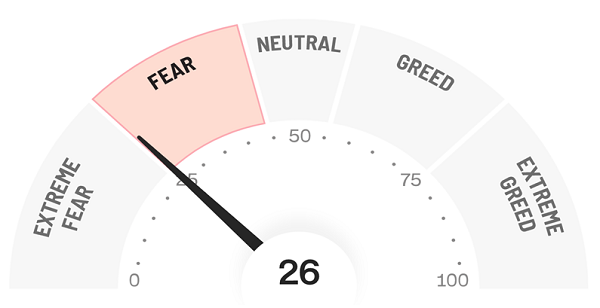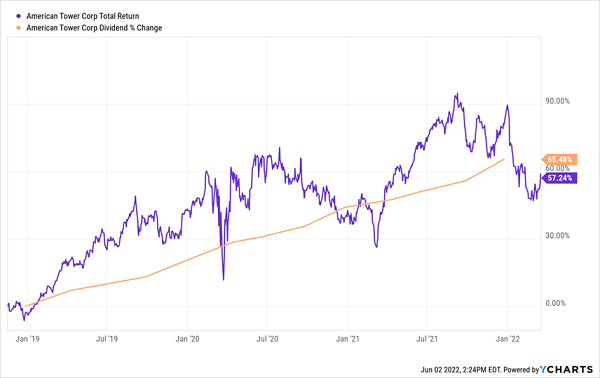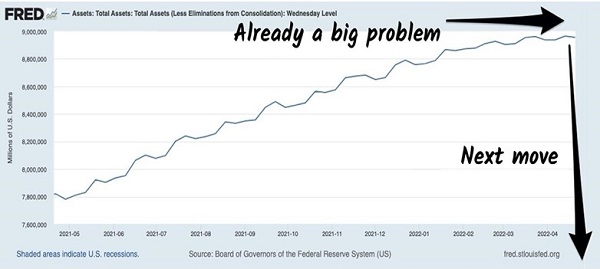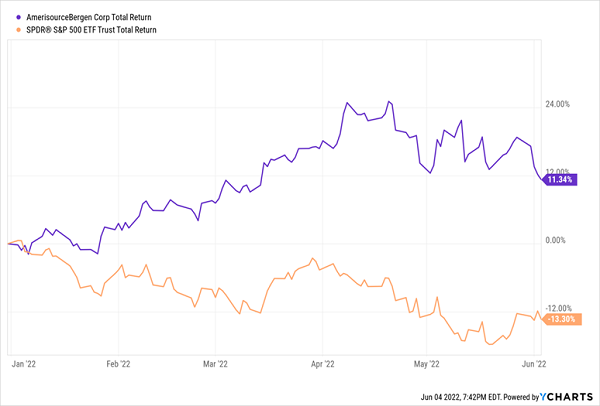Here’s some advice you might be surprised to hear from an investment-newsletter writer: Do NOT buy stocks right now.
That is, unless you can answer an emphatic “yes!” to these three questions:
- Are you investing for the long term?
- Are you investing in stocks that are not only growing their dividends but accelerating that payout growth?
- Are you only investing a small portion of your holdings (and ideally keeping the bulk in cash to ride out this storm)?
If you answered yes to all three, great! I’ll show you what you must demand in any dividend grower to ensure you’re locking in a safe payout while protecting yourself from today’s Fed-driven market panic.
And if you’re still holding speculative junk (and yes, some dividend payers can be considered junk—don’t let their payout “halos” fool you!), the best time to dump it was in January. The second-best time is now.
“Trading Lightly” Now—Ahead of the Coming Dividend Shopping Spree—Is Key
Today’s wild market calls for a contrarian “2-track” approach. Track 1 is to stay mostly in cash while we ride out the storm and set ourselves up for quick upside on the other side. Track 2 is only for those who really want to invest and are doing so for the long haul.
You see, I’m a contrarian first and foremost, and we only fully deploy our cash hoard when we see a clear edge—and I don’t see one yet.
What kind of edge are we looking for? We only want to fully invest when the regular investor has thrown in the towel. And there are plenty of indicators that can tell us exactly when our time has come. Consider, for example, the closely watched CNN Fear/Greed Index, which sits at 26 as I write:

Source: CNN.com
That’s pretty low—but not as low as the six (six!) we saw a couple weeks back.
Lower is better from our contrarian perspective, especially if we’re looking to swing trade for some fast gains (and dividends!). A basement-level reading means the average investor has given up. Today’s higher reading of 26 is problematic because it means the average guy and gal are starting to get back in the game.
Bullish sentiment during longer declines typically tops out in times like this. Which means the next leg of the stock market drop could start soon. Joe and Jane Average always get in at the wrong time!
Our Long- and Short-Term 2-Track Dividend Play
This is where our smart 2-track strategy comes in, because we can lay down some longer-term money now and take advantage of the discounts available to us, while collecting our growing dividends from these stocks as we tuck them away for the long run.
History is on our side here.
Remember late 2018, when the Fed was raising rates and running off its balance sheet—and the market threw a “taper tantrum”? Back then, “America’s ticker”—what I call the SPDR® S&P 500 (NYSE:SPY), the index fund pretty well everyone holds—was tumbling:
The Fed Sent Stocks Lower in 2018…

Sound familiar? That’s because today we’re looking at a similar setup, with rates rising and the Fed starting to unload its massive hoard of bonds—$9 trillion worth this time. The result has been the same for “America’s ticker”:
… And in 2022

That 2018 drop turned out to be a sterling opportunity for some. In November of that year, toward the end of the selloff, we picked up our cell-tower landlord American Tower (NYSE:AMT),a real estate investment trust whose “tenants” include AT&T Inc (NYSE:T) and Verizon (NYSE:VZ).
We liked AMT because it’s a classic “tollbooth” play, charging its clients a toll for using its vast tower network, then handing most of that cash to us as a dividend that rises every quarter!
That rising payout, in turn, acted like a “Dividend Magnet,” pulling up the share price in lockstep. AMT kept the payout hikes rolling through the pandemic, “magnetizing” the shares in the process and leaving us with a 57% total return when we sold in March of this year:
AMT Rides Its Dividend Through the COVID Disaster

To be sure, there was some turbulence at the start of our holding period, as the markets struggled to find a bottom. I expect a similar setup this time around.
So why aren’t we going “all in”?
Because of one critical difference between now and 2018: inflation is running at 8.3%, which will keep Fed Chair Jay Powell from pivoting away from rate hikes, as he did when he steered the market into a ditch four years ago!
At heart, our favorite central banker is a political creature, and inflation is the No. 1 problem he’s facing today. So to help out Main Street, he’s willing to sacrifice Wall Street.
The slowing of the Fed’s massive money printer has already caused the broader stock market to, ahem, correct. But the real capital cleanup is yet to come. The Fed is supposed to remove $1 or $2 trillion from its balance sheet at the rate of $95 billion a month!
How do we think that’ll go?
Next Up: The Hangover

So if you are buying now, bear in mind that the volatile period we saw back in 2018 is likely to stick around for much longer this time. Which is why I recommend investing only for the long term, and only with a small portion of your cash—keeping the bulk available for when the real shopping spree comes.
Meantime, for any stocks you’re considering today, make sure you demand a low beta rating. Beta is a measure of volatility: a stock with a beta of 1 moves at roughly the same speed as the market (up or down). Betas below 1 are less volatile than the market; those above 1 are more volatile.
For example, consider Hidden Yields holding AmerisourceBergen (NYSE:ABC), which handles one-fifth of all the pharmaceutical drugs sold in the US. Its sturdy business results in a steady stock price. ABC has a 5-year beta of 0.45 or so, which means it moves 45% as fast as the market.
In other words, on days when the S&P 500 is down 3%, this stock should only be down 1.5% or so. That’s the theory. In reality, it’s even better. ABC is one of a tiny group of equities that’s calmly floated higher all year:
ABC Rises When the Market Flops

ABC pays a modest 1.2% dividend, but that isn’t the full story. The company raises its payout by about 5% per year. Plus, there was another underlying catalyst here that only Hidden Yields members were tipped off to: the stock was too cheap thanks to legal uncertainty. That was resolved with the firm’s recent opioid settlement—which ABC then deducted on its taxes. (What a country we live in!)
Regulators weren’t happy, but this was a valid expense, according to our tax laws. We’re up 50% on our purchase of ABC in Hidden Yields, and the stock continues to defy gravity.
Disclosure: Brett Owens and Michael Foster are contrarian income investors who look for undervalued stocks/funds across the U.S. markets. Click here to learn how to profit from their strategies in the latest report, "7 Great Dividend Growth Stocks for a Secure Retirement."
